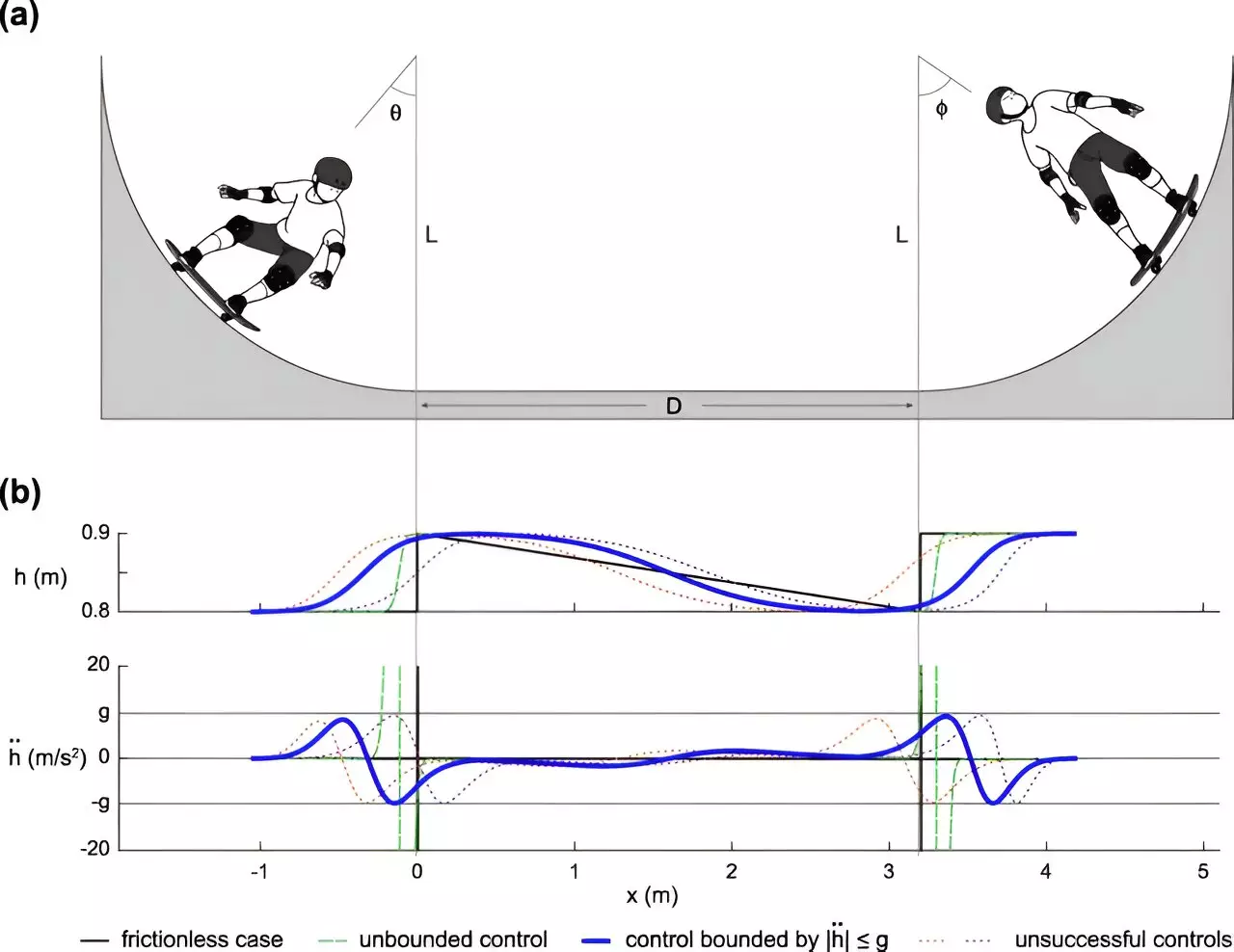A collaborative team consisting of engineers and mathematicians from ETH Zürich, along with partners from The Institute of Statistical Mathematics and ATR Institute International in Japan, has ventured into a fascinating intersection of sport and physics. Their recent findings, published in the esteemed journal *Physical Review Research*, delve into the dynamics of human movement on skateboards as they navigate a half-pipe. This study focuses on an everyday activity—skateboarding—transforming it into an intricate field of scientific inquiry, proving that even recreational pursuits can reveal profound insights into mechanics.
To establish their model, the researchers drew a parallel between skateboarders and another well-known motion: that of a person swinging. The swing serves as an illustrative analogy, representing the kinetic energy transfers that take place in both activities. By understanding how momentum and gravitational forces act on a swinging body, the team could extrapolate these principles to understand skaters performing tricks and maneuvers on the half-pipe.
The half-pipe is a staple in the world of skateboarding, characterized by its crescent shape, resembling a pipe sliced in half. Made from sturdy materials like wood or cement, these structures enable skaters to build up speed and execute gravity-defying stunts. A skater enters from one side, rolls down, glides through the base, and ascends the opposing incline. However, to navigate the half-pipe efficiently, continuous motion is required. This is where the concept of “pumping” becomes essential.
What does pumping involve? As the skater descends into the valley formed by the structure, they crouch and then extend their bodies as they ascend, leveraging gravitational pull to maximize their speed. This motion is reminiscent of how children propel themselves on swings—it’s an instinctive manipulation of body stance to harness physical forces optimally. However, the complexity arises in how these maneuvers lead to airborne actions, with variables that differ from rider to rider.
Mathematical Modeling: A Novel Approach to Understanding Momentum
Building on existing physics models of swings and pendulums, the research team meticulously analyzed videos of skateboarders captured in motion. This observational study became the bedrock of their unique model, as they integrated factors specific to skateboarding. The researchers discovered the profound role that body positioning and mass modulation play in enhancing skating performance. By adjusting their weight and stance, skaters could effectively change their trajectory and velocity while navigating the curves of the half-pipe.
Once the model took shape, it was put to the test to derive the most effective pumping technique. Interestingly, the results suggested theoretical optimal moves that would be impossible to perform in practice; they would eject the skater off the structure entirely. This outcome underlines the complex interplay that exists between theoretical physics and real-world application—a reminder that while models can provide idealized versions of reality, human application often deviates significantly due to safety and practical constraints.
Despite the limitations identified, the researchers gleaned an exciting potential from their findings. They propose that their model could serve as a framework to enhance the functionality of robotics, particularly in developing systems that need to maintain balance on uneven surfaces. This is an intriguing application that extends the relevance of their study far beyond the skateboard park to realms like robotics engineering and autonomous navigation.
In summation, this innovative study illuminates the fascinating physics that underpin skateboarding while simultaneously exploring how mathematical modeling can amplify our understanding of movement. The blend of engineering, mathematics, and applied physics not only advances our knowledge of recreational activities but also paves the way for practical applications in diverse fields. The team’s work encapsulates how playful endeavors can inform serious scientific exploration—reminding us that the principles of physics are undeniably present in all facets of life, even in our most spirited pastimes.


Leave a Reply